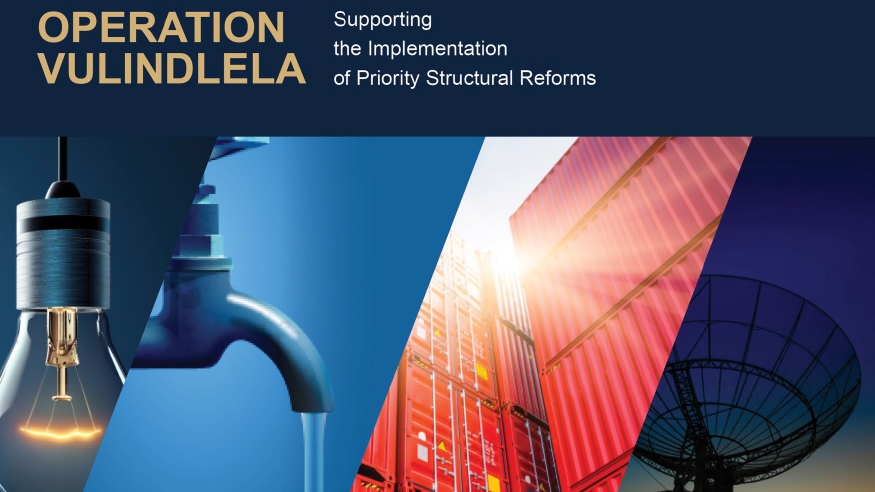- Operation Vulindlela published its latest report this week.
- Eskom’s Energy Availability Factor has improved to 60 percent compared to 49 percent a year ago.
- This is of little consequence to South Africans who are still faced with daily powercuts.
Anybody who has spent a lot of time online has likely encountered the “inverse Cramer” meme. The joke revolves around the presenter of CNBC’s Mad Money, Jim Cramer who has infamously bet against or on companies only for those companies to then turn, leaving Cramer a bit red in the face with embarrassment.
We hark back to this meme because it seems as if South Africa’s government has a bit of “inverse Cramer” energy itself.
This week the Presidency and National Treasury published a report on the pair’s Operation Vulindlela initiative. This operation seeks to accelerate the implementation of structural reforms and support economic recovery. Today we’ll be looking specifically at the progress made in the electricity and digital communication spheres.
Make no mistake, there are many wins in this update. This includes the fact that the analogue switch-off is happening in earnest after many delays and that nine projects in the Risk Mitigation Independent Power Producer Procurement Programme Bid Window 5 have reached financial close with more expected before the end of the year.
But we had to have a bit of a chuckle at the fact that the report praises Eskom for improving its energy availability factor (EAF) just days before the wheels came off.
“There has been a notable improvement in Eskom’s Energy Availability Factor (EAF) during the past quarter, which has increased to nearly 60% from a low level of 49% at the beginning of the year. Eskom is implementing its Generation Recovery Plan to improve plant performance and reduce unplanned breakdowns,” reads the report.
On Tuesday morning, Eskom reported that it lost three generation units on Monday evening. This has led to loadshedding’s frequency being increased from Stage 1 during the day to Stage 2. The utility says it will publish a further update on Tuesday afternoon so we advise South Africans brace for the possibility of a higher stage of loadshedding overnight.
#LoadsheddingUpdate
— Eskom Hld SOC Ltd (@Eskom_SA) August 29, 2023
Tuesday, 29 August 2023:
Due to the loss of 3 generation units last night, loadshedding will be increased to Stage 2 from 05:00 until 16:00 today. Eskom will publish another update this afternoon.
While the irony is humorous, we’d be lying if we said things at Eskom haven’t improved over the course of the last year. The EAF improvement isn’t anything to sniff at and the fact that we’ve only seen a loadshedding increase of one stage after the loss of three generation units is rather surprising.
This improvement has been spurred along by the procurement of additional capacity. The aforementioned Bid Window 5 will see 19 of the 25 bidders adding around 1 800MW of capacity to the national grid in the coming months. The use of the private sector to make up Eskom’s existing shortfall is also encouraging with 66GW of capacity being unlocked through wind and solar energy projects.
On the list of focus areas for the future, the Presidency and National Treasury says that it hopes to develop special legislation to remove red tape for energy projects. The hope is that this will help accelerate solar, wind and battery storage projects. However, we should point out that introducing new legislation is a lengthy process so while it’s encouraging, we aren’t holding our breath in waiting.
How about digital communication reforms?
Of course, the report also covers how government is looking to reform the digital communication space which has been in dire need of attention for years now.
For all government’s talk of the Fourth Industrial Revolution, very little has been done to bridge the digital divide and enable emerging technologies.
Some the achievements of Operation Vulindlela in the space of digital communications is the spectrum auction that took place in March 2022. Counting this as “progress” for the second quarter of 2023 looks to us as if government is grasping to fill this incredibly short list out.
One area of interest for us, as regards the future, is the introduction of a secondary market for trading spectrum.
“ICASA initiated its work to develop a regulatory framework for enabling implementation of dynamic spectrum sharing, which will facilitate the development of a secondary market by inviting public input into its Discussion document on Dynamic Spectrum Access and Opportunistic Spectrum Management,” reads the report.
There is also an encouraging plan to help accelerate the deployment of the infrastructure needed to enable digital communications.
We’d love to see a bit more urgency from government as regards accelerating the availability and access to digital communication infrastructure. This has always been a space where government has dragged its feet, even while it espouses the benefits.
Despite our criticism this latest report from Operation Vulindlela is encouraging but we would like to see these reforms being implemented with a bit more vigour.
You can read the full report below.

